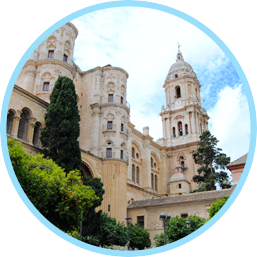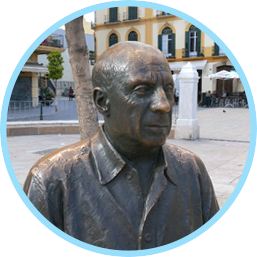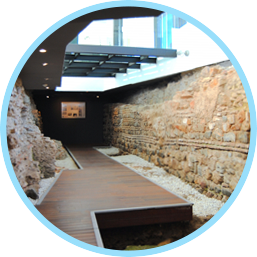 Recently I had one of those pleasures in life that comes without warning. My good friend Mary, who’s always coming up with new ideas, was to blame. A few years ago she did our “Malaga and Picasso” tour and was delighted with it. Today, she is the mother of a five year old little boy named Cesar. When she heard that her son’s class would have a term dedicated to Picasso, all of a sudden she had a bright idea and thought about me.
Recently I had one of those pleasures in life that comes without warning. My good friend Mary, who’s always coming up with new ideas, was to blame. A few years ago she did our “Malaga and Picasso” tour and was delighted with it. Today, she is the mother of a five year old little boy named Cesar. When she heard that her son’s class would have a term dedicated to Picasso, all of a sudden she had a bright idea and thought about me.
The proposal was both simple and challenging. To give a talk about Picasso to five-year-olds. I had no problem with the theory, but dealing with a whole class of restless little beings was totally new to me. It meant stepping outside my comfort zone, something my friend constantly pushes me into. She throws her glove at me and I, I must admit, end up picking it up (almost) every time. But this time I have to admit that I was a little reluctant.
My experience with children, although I enjoy my 4 nephews very much, is limited to little more than that and a few children of friends. But facing a gang of effervescent dwarves is another matter. Although I was concerned about the attention or interest a 5 year old might have (or not) in the subject, what worried me most was how to adapt the subject, in this case Picasso, to some kids.

However, Picasso is very easy to relate to children. Finally, after this experience, I think it should be mandatory to learn him at that age, when you are not prejudiced about art and your mind is still a blank canvas. In fact, Picasso himself proposed that the viewer should be the one to finish his painting. In other words, his art didn’t have a closed end, but rather each one interpreted it in a different way, and all were valid.
So I headed to the school with numerous images to show the kids. I was supposed to impress them, but I think they were the ones who surprised me. During my talk I taught about Picasso’s family and his love for animals, always searching for a point of connection with kids. Throughout my exhibition I mixed more conventional artworks with more distorted ones. We discovered women with six fingers, with purple skin, a statue of a monkey whose head was a toy car, and so many other peculiarities that children were quick to point out.
In the end I proposed a game where they had to differ whether the images I was showing them were from his young, more academic period, or from his cubist and later period, from a more mature Picasso. Although it seemed that in the end they had grasped the idea, the truth was not so. It was a kind of self-deception that I liked to believe to justify my good work with them. Anyway, the kids were very happy to have done a different activity, and I hope they learned something.

However, all this left me thinking. That a 5 year old child does not see so much difference between a realistic, traditional painting and a modern, asymmetrical, cubist one, totally shows that the beginning in the world of art is done in the most naive and tolerant way. As Picasso himself said, in one of his many famous quotes, he came to say something similar to the following: “As a child I always took painting very seriously, from the very first time. I wanted to paint well, like the grown-ups did. Throughout my career I have tried to free myself from that weight, from that prejudice that I always had. Now I want to paint freely, without preconceived ideas, as if I were a child”.
I found it to be a rewarding experience. To be able to introduce an artistic curiosity into beings who have their whole lives ahead of them is a very satisfying feeling. Of course, I called my friend to get reactions. She told me that teachers were delighted, that the exhibition was motivating, but what I take away from this whole experience is the way Cesar, her 5-year-old, referred to me. According to him, I am “the man who knows all about Picasso”.












